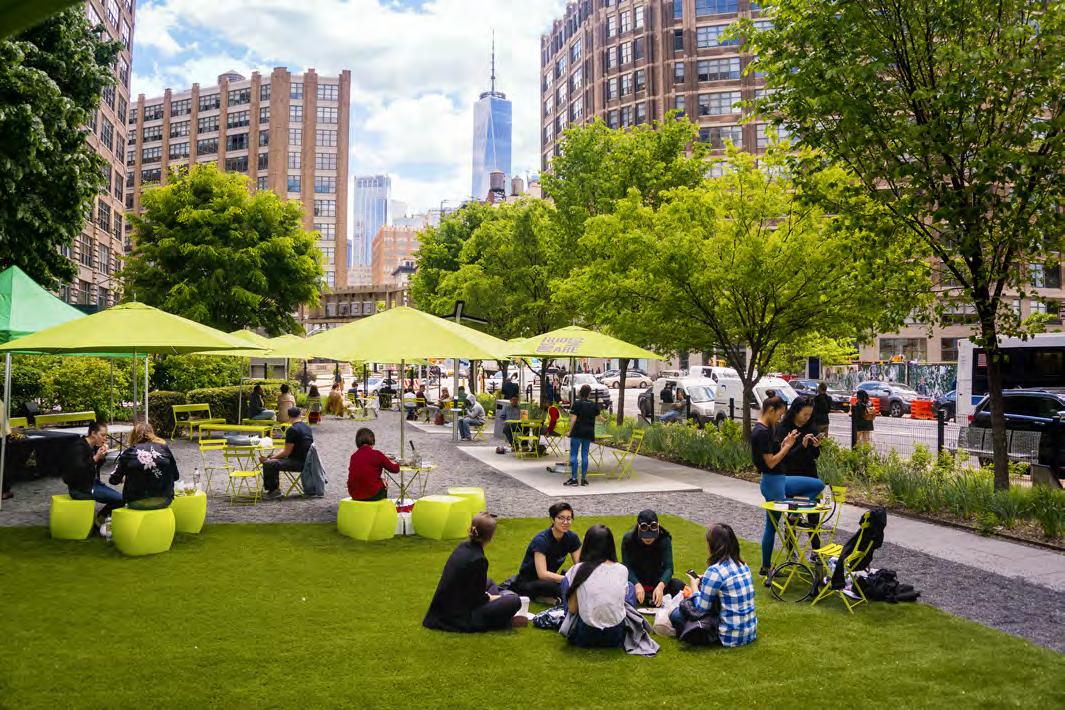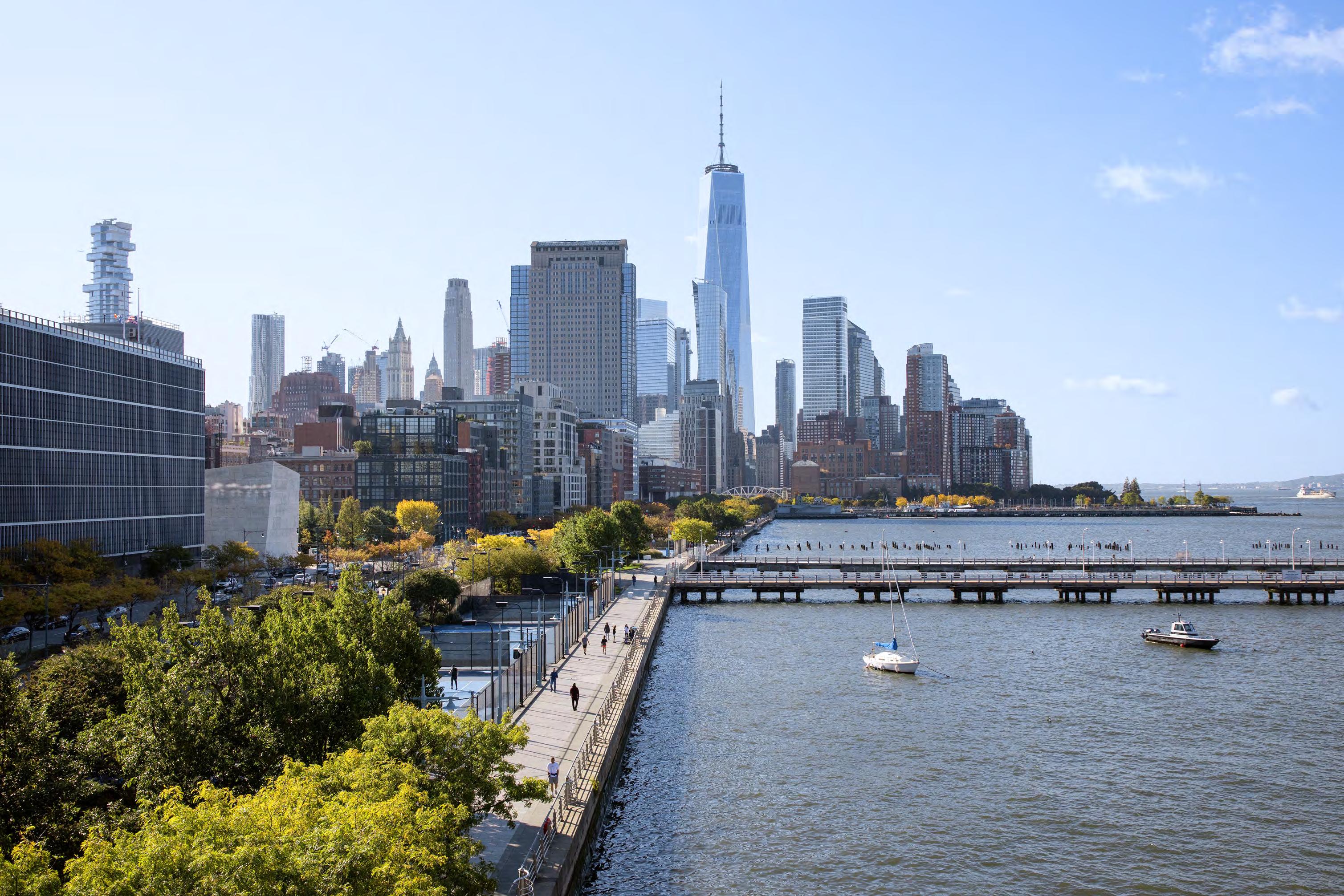
3 minute read
STORIES
From Hudson Yards to Hudson Square, Manhattan’s western fringes and waterfront spaces are enjoying a renaissance.
by David Graver
FROM A global perspective, New York City is best known for its centrally located swaths— Times Square, Central Park, and, of course, Broadway, a cultural current that flows 13 miles through the island of Manhattan, from Inwood to the Financial District. New Yorkers, however, are far from restricted to these famous thoroughfares. They work in and inhabit almost every corner of their sprawling urban oasis—and they pride themselves on discovering and developing new neighborhoods. Today, no locale in Manhattan is transforming as quickly as the western frontier stretching from Hudson Square to Hudson Yards and beyond.
The renaissance stems in part from improvements that have stitched the fabric of the city tighter together, such as better transportation options, including ridehailing apps like Uber and Lyft. But the real driving force is the recognition of the waterfront as a resource and the reclamation of historic spaces that line it. For years, Manhattan’s coast wore industrial armor, welcoming cargo ships and harboring factories and processing centers. In a postindustrial city, abandoned infrastructure has been reimagined as something new: verdant public space.
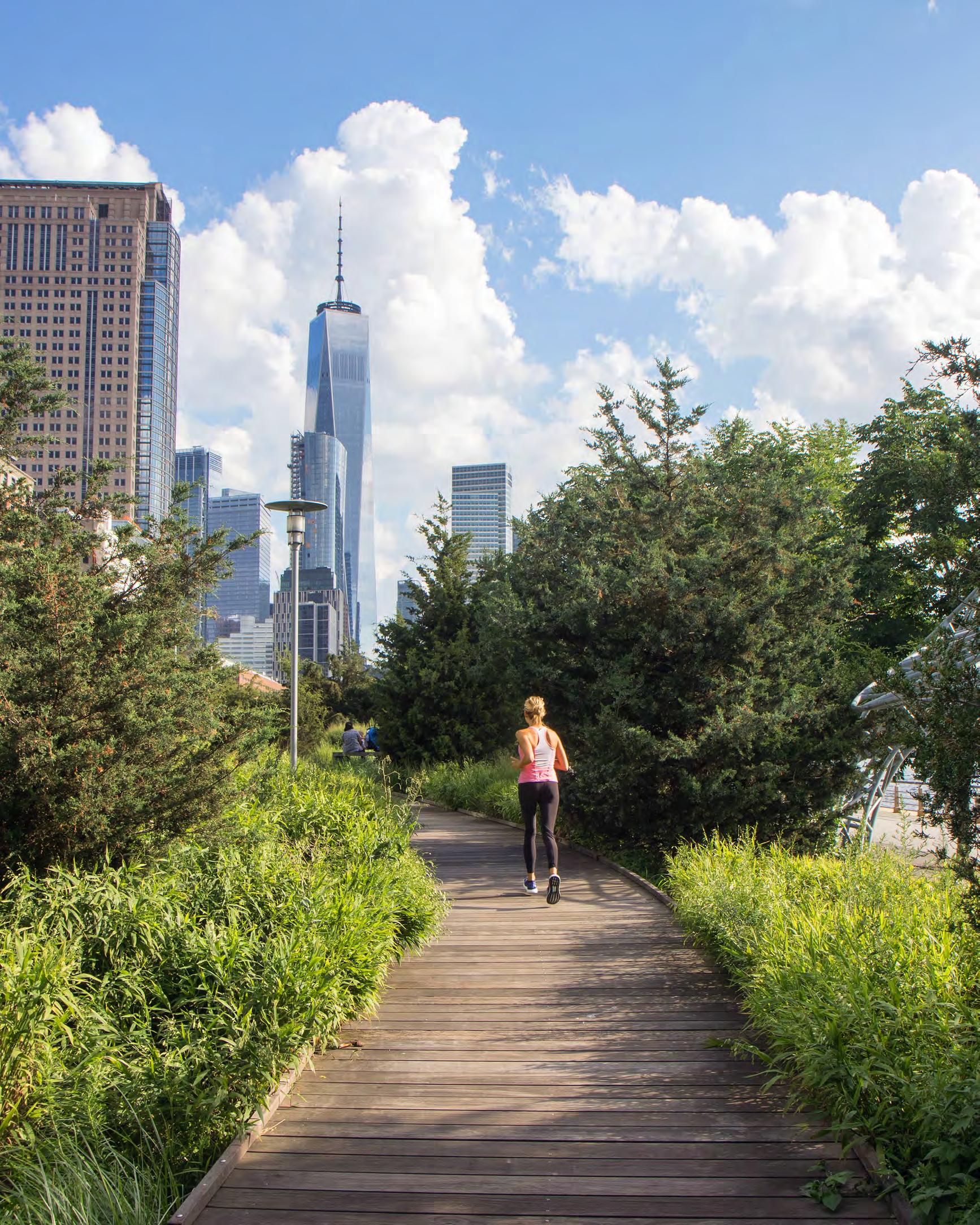
It began with the High Line, the beloved track of an aboveground rail line transformed into a slender park of astonishing beauty from Gansevoort Street all the way to Hudson Yards. The renaissance has continued with the repurposing of New York City’s piers, once places for crew or passengers, now hotspots for recreation. Driven by the Hudson River Park Trust, Manhattan’s far west has been reinvented pier by pier, from Tribeca’s ecologically immersed Pier 26 (which features its own tide deck) to 15th Street’s sprawling Pier 57. The latter, developed by RXR Realty and Google, provides nearly two acres of open space, complete with a dynamic, mission-driven food hall. It even incorporates an outdoor screening location utilized by the Tribeca Film Festival.
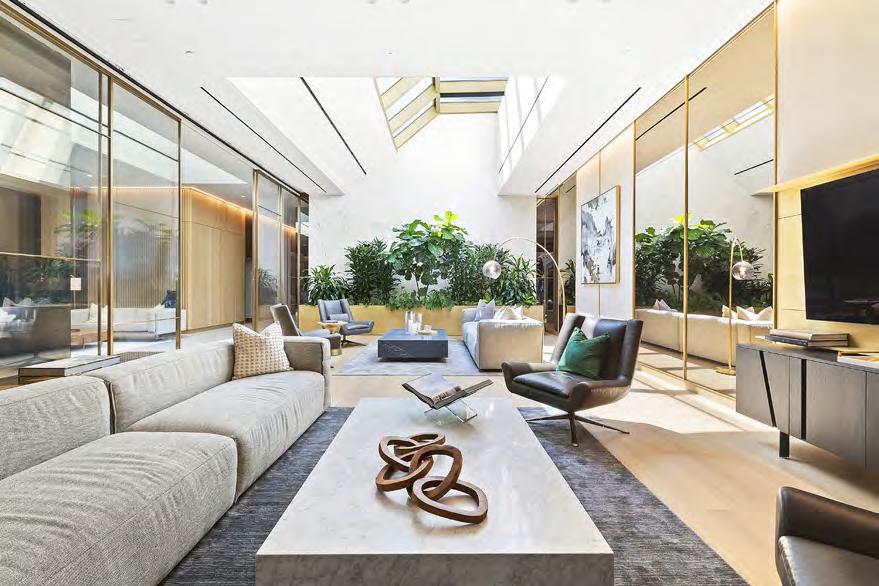

Room To Roam
Perhaps no West Side waterfront development has received as much fanfare as star architect Thomas Heatherwick’s Little Island. Heatherwick transformed the remnants of Pier 54—which once welcomed survivors of the Titanic and later became a stomping ground for the LGBTQ+ community—into a topographic wonderland, replete with whimsical landscape architecture. It’s a cutting-edge, active-use monument that excels where many believe Heatherwick’s other West Side wonder, the Vessel at Hudson Yards, leaves much to be desired. That said, the Vessel and Little Island both represent thoughtful artistic investment along the Hudson River and reflect the reality that public outdoor space brings people to a neighborhood.
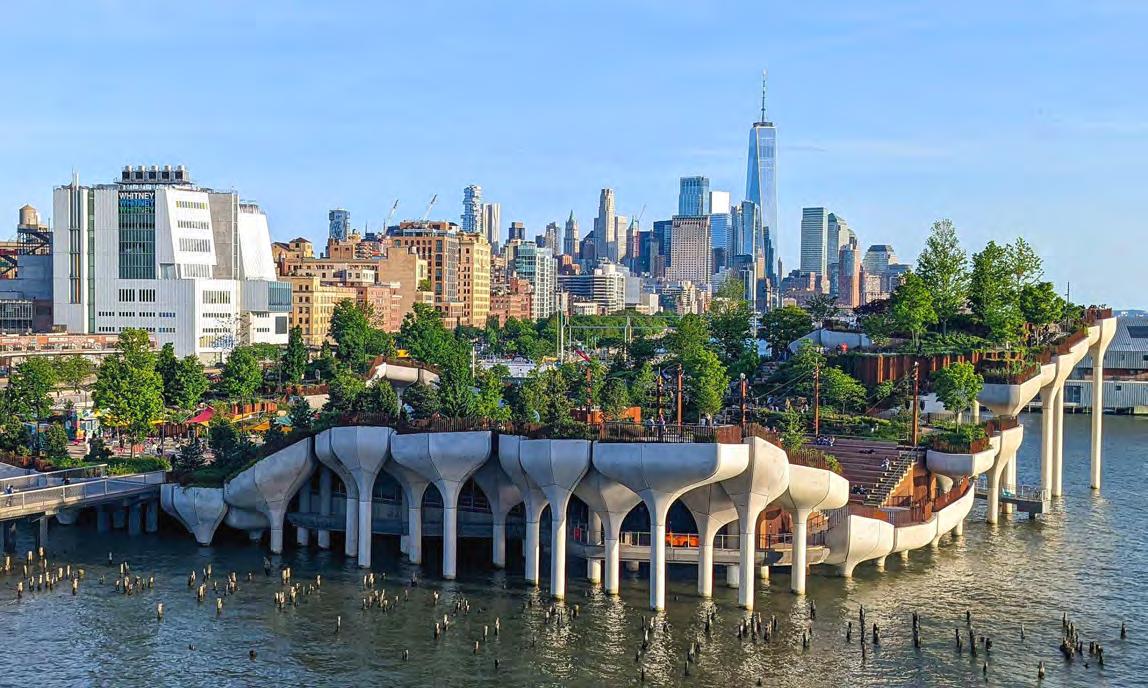
As the park infrastructure has expanded, an influx of residential developments has risen along the water and on the neighboring streets and avenues. From Bloom on Forty Fifth, nestled between Hudson River Park’s green spaces and Midtown’s skyscrapers, all the way south to Hudson Square, the western reaches of Manhattan have welcomed fresh structures and new faces.
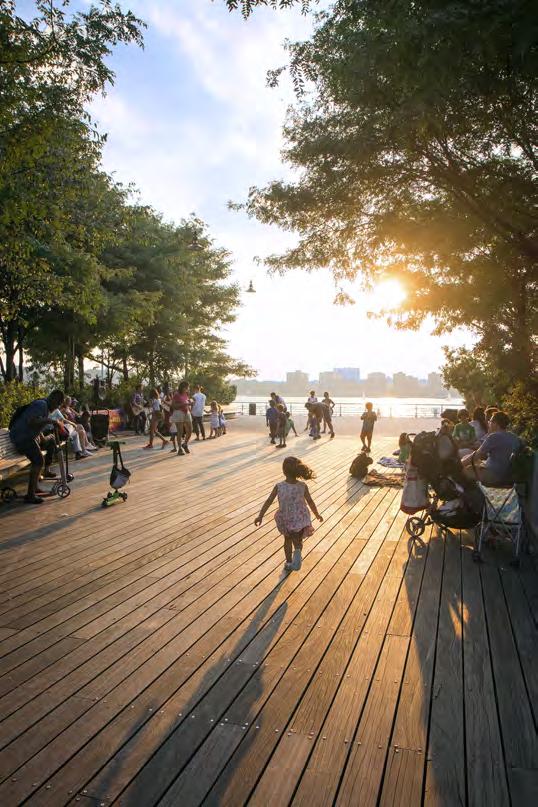
Alongside the aforementioned Hudson Square, one of the hottest neighborhoods in Manhattan right now, there’s an alluring addition by Pritzker Prize–winning architect Renzo Piano, the mastermind behind the Whitney Museum of American Art (located in the Meatpacking District, also on the Far West Side of the city). Known as 565 Broome SoHo, it’s the star architect’s first-ever residential building. Not only does it sit in a new frontier of the city, it sets a new luxury standard with a whopping 17,000 square feet of amenities, which include a 55-foot-long indoor heated pool, a steam room, and a sauna. There’s a landscaped glass conservatory with ceilings set 92 feet into the air, an accompanying lounge, and a landscaped terrace.
“Our clients love the striking architecture of the building and the location, on the edge of the energy of prime Soho but with quieter, more peaceful blocks just to their west,” says Noble Black, a licensed associate real estate broker at Douglas Elliman. “And of course there are amazing views in every direction.” Floor-toceiling windows and interiors by the award-winning architecture and design practice RDAI emphasize these views as well as the curvature of Piano’s building.
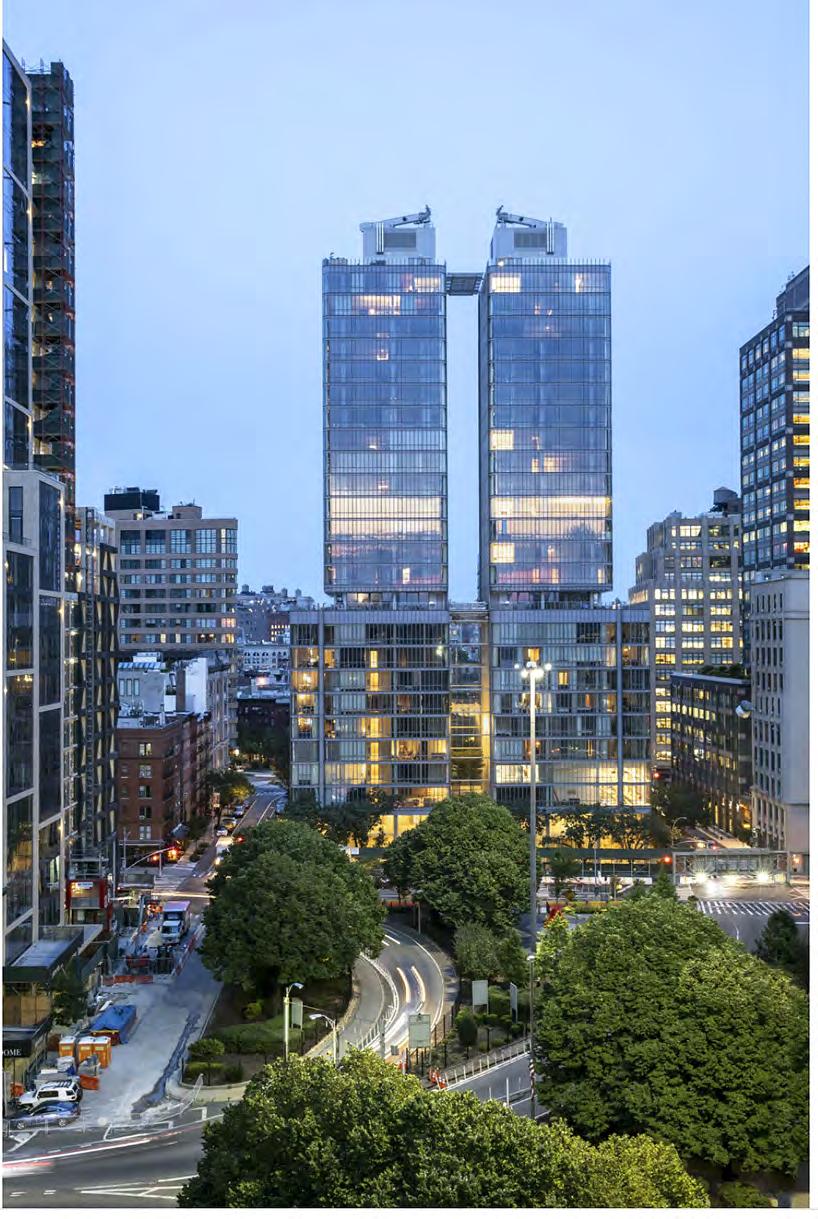
UP-AND-COMER
Hudson Square is a microcosm of the vast potential of west Manhattan, where commitment has blossomed into expanding interest. Though it is not yet a household name, the 33-block tract will soon be the home base for thousands of employees of two major corporations. Situated above Tribeca and below the West Village, the neighborhood—sometimes called West Soho, and formerly referred to as the Printing District—is welcoming offices for Google at St. John’s Terminal and Disney ABC at Four Hudson Square.


These individuals, as well as new residents, will benefit from the abundant green public spaces, new bike paths, widened sidewalks, and more. Much of it is thanks to Hudson Square’s Business Improvement District, an organization that has sought to prioritize people over cars with the goal of establishing a unique neighborhood identity. It recently created two plazas, renovated Spring Street Park, and completed a 10-year rejuvenation plan. Its next decadelong commitment will focus on Houston Street and lend even more value to those on foot.
In fact, nothing brings the magic of the waterfront (and all that runs toward it) into focus better than a stroll—at sunrise, sunset, or any time between—to see pedestrians enjoying the ever-unfurling majesty, the new restaurants and boutiques, and the architectural additions to a changing cityscape.
